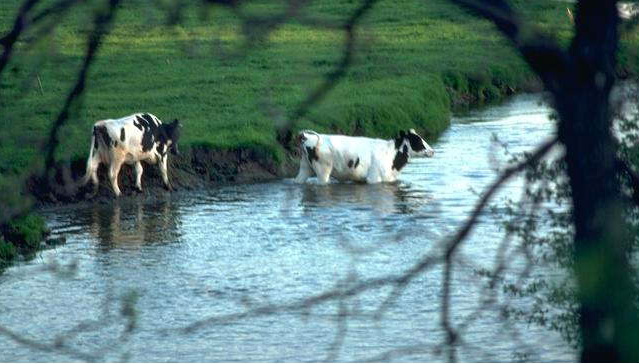There are many ways animal farmers are able to reduce their impacts on the Bay
Sustainable Farming / Best Management Practices (BMPs)
Many best management practices concern crop farming and land cover; however, there are many ways farmers can reduce the environmental impacts of their livestock:
The proper application of manure and litter to crops and the transport of excess wastes to areas that need them( nutrients locked up in plants won't run off into streams and tributaries) Investment in effective waste storage systems (for farmers not recycling wastes as fertilizers) Fencing off streams to make them inaccessible to livestock. (and in some extreme cases, relocating livestock facilities away from streams) Using grass and forest buffers along pastures to reduce runoff -
Feeding livestock new diets that reduce the nutrients in their wastes
Covered Manure Storage Ponds
Reduce runoff Allow organic matter to break down naturally Allows for methane gas, which is released in decomposition, to be captured and collected. It can sometimes be used by the farm.
Bioloical Nutrient Removal
Uses suspended growth (activated sludge) treatment systems to remove Nitrogen and Phosphorus from wastewater. There are three steps:
Anaerobic Step: Enhanced Biological Phosphorus Removal Anoxic Step: Denitrification Aerobic Step: Nitrification
|

